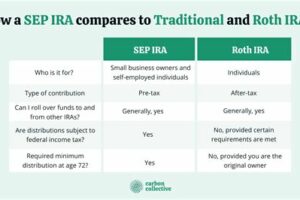Table of Contents
Discover which state in the Southeast has the largest number of tree farms and learn about their unique forestry practices.
When it comes to tree farming in the Southeast, one state stands out above the rest. With its vast stretches of fertile land and ideal climate conditions, this state has become a haven for tree farmers looking to cultivate a diverse range of hardwoods and softwoods. From towering pines to majestic oaks, this state boasts an impressive array of tree species, making it a top destination for timber harvesters and forestry enthusiasts alike.
But which state exactly holds the title of the most tree farms in the Southeast?
The answer may surprise you.
It’s none other than Georgia.
That’s right, the Peach State is also home to an abundance of tree farms, with over 24 million acres of forestland and more than 200,000 private landowners engaged in sustainable forestry practices. But what sets Georgia apart from its neighboring states? How did it become the leading producer of timber in the region? Let’s explore the factors that have contributed to Georgia’s success in the world of tree farming.
The Southeastern region of the United States is known for its lush greenery and natural beauty. One of the reasons behind this is the abundance of tree farms in the area. These farms not only help to preserve the environment but also provide a sustainable source of timber. In this article, we will explore which state has the most tree farms in the Southeast.
Georgia
Georgia is home to the largest number of tree farms in the Southeast. The state has over 24 million acres of forested land, making it one of the top forestry states in the country. According to the Georgia Forestry Commission, there are more than 22,000 private tree farms in the state, covering an area of nearly 5 million acres.
These tree farms grow a variety of trees, including pine, oak, and hickory. They also provide a range of services, such as timber harvesting, wildlife management, and recreational activities like hunting and fishing. The tree farming industry in Georgia is worth billions of dollars and provides employment opportunities for thousands of people.
Florida
Florida is another state with a significant number of tree farms. The state has over 17 million acres of forested land, and forestry is one of the top industries in the state. According to the Florida Forest Service, there are more than 5,000 private tree farms in Florida, covering an area of over 2 million acres.
These tree farms grow a variety of trees, including pine, cypress, and eucalyptus. They also provide a range of services, such as timber harvesting, wildlife management, and recreation. The tree farming industry in Florida is worth billions of dollars and provides employment opportunities for thousands of people.
Alabama
Alabama is another state with a significant number of tree farms. The state has over 23 million acres of forested land, and forestry is one of the top industries in the state. According to the Alabama Forestry Commission, there are more than 23,000 private tree farms in Alabama, covering an area of over 11 million acres.
These tree farms grow a variety of trees, including pine, hardwoods, and cypress. They also provide a range of services, such as timber harvesting, wildlife management, and recreation. The tree farming industry in Alabama is worth billions of dollars and provides employment opportunities for thousands of people.
South Carolina
South Carolina also has a significant number of tree farms. The state has over 12 million acres of forested land, and forestry is one of the top industries in the state. According to the South Carolina Forestry Commission, there are more than 9,000 private tree farms in South Carolina, covering an area of over 4 million acres.
These tree farms grow a variety of trees, including pine, hardwoods, and cypress. They also provide a range of services, such as timber harvesting, wildlife management, and recreation. The tree farming industry in South Carolina is worth billions of dollars and provides employment opportunities for thousands of people.
North Carolina
North Carolina is home to a significant number of tree farms as well. The state has over 18 million acres of forested land, and forestry is one of the top industries in the state. According to the North Carolina Forest Service, there are more than 50,000 private tree farms in North Carolina, covering an area of over 9 million acres.
These tree farms grow a variety of trees, including pine, hardwoods, and Christmas trees. They also provide a range of services, such as timber harvesting, wildlife management, and recreation. The tree farming industry in North Carolina is worth billions of dollars and provides employment opportunities for thousands of people.
Mississippi
Mississippi is another state with a significant number of tree farms. The state has over 19 million acres of forested land, and forestry is one of the top industries in the state. According to the Mississippi Forestry Commission, there are more than 11,000 private tree farms in Mississippi, covering an area of over 4 million acres.
These tree farms grow a variety of trees, including pine, hardwoods, and cypress. They also provide a range of services, such as timber harvesting, wildlife management, and recreation. The tree farming industry in Mississippi is worth billions of dollars and provides employment opportunities for thousands of people.
Conclusion
The Southeastern region of the United States is home to some of the largest and most productive tree farms in the country. These farms provide economic benefits, employment opportunities, and help to preserve the environment. While Georgia has the highest number of tree farms, other states like Florida, Alabama, South Carolina, North Carolina, and Mississippi also have significant numbers of tree farms. The tree farming industry in the Southeast is an important part of the region’s economy and will continue to play a vital role in the future.
The Greenery of the Southeast is a sight to behold. The region is known for its lush forests, which have been a source of livelihood for many. One industry that has emerged from these forests is tree farming. An Overview of Tree Farms in the Southeast shows that this industry has grown significantly over the years, providing jobs and contributing to the economy. However, not all states in the Southeast are equal when it comes to tree farming. The Top State for Tree Farms in the Southeast is Georgia. With over 3.7 million acres of forestland, Georgia has the largest number of tree farms in the region. These farms produce a variety of products, including timber, paper, and wood pellets.Georgia’s Place in Southeastern Tree Farming can be attributed to the state’s commitment to sustainable forestry practices. The state has a Forest Stewardship Program that encourages landowners to manage their forests in an environmentally responsible manner. This program has helped to increase the number of certified tree farms in the state. Georgia also has a strong timber industry, with many sawmills and other wood processing facilities located throughout the state.Florida’s Tree Farms: An Underrated Industry is often overlooked when people think of the state’s economy. However, tree farming is a significant contributor to Florida’s economy. The state has over 16 million acres of forestland, much of which is used for tree farming. Florida’s tree farms produce a variety of products, including pulpwood, sawtimber, and wood pellets. The state’s tree farming industry also supports many jobs, particularly in rural areas.Alabama’s Flourishing Forests have played a significant role in the state’s history and economy. The state has over 22 million acres of forestland, which is used for both timber production and recreation. Alabama’s tree farming industry has grown significantly over the years, with many landowners using sustainable forestry practices. The state also has a strong pulp and paper industry, with several mills located throughout the state.Mississippi and the Sustainable Tree Farming Movement have been working together to promote responsible forest management. The state has a Forest Stewardship Program that provides technical assistance to landowners who want to manage their forests sustainably. Mississippi’s tree farming industry produces a variety of products, including timber, pulpwood, and wood pellets. The state also has a growing bioenergy industry, which uses wood waste to produce renewable energy.Comparing the Tree Farming Practices of Tennessee and Kentucky shows that both states have strong tree farming industries. However, Tennessee has a larger number of certified tree farms than Kentucky. The state also has a strong timber industry, with many sawmills and other wood processing facilities located throughout the state. Kentucky’s tree farming industry is also significant, with many landowners using sustainable forestry practices. The state produces a variety of products, including hardwood lumber, paper, and wood pellets.South Carolina’s Growing Tree Farm Industry is an important contributor to the state’s economy. The state has over 12 million acres of forestland, much of which is used for tree farming. South Carolina’s tree farms produce a variety of products, including pulpwood, sawtimber, and wood pellets. The state’s tree farming industry also supports many jobs, particularly in rural areas.The Future of Southeastern Tree Farming looks bright, as demand for wood products continues to grow. However, it is important that the industry continues to use sustainable forestry practices to ensure the long-term health of the region’s forests. This will require continued investment in research and development, as well as education and outreach to landowners and the public. With the right policies and practices in place, the Southeast’s tree farming industry can continue to thrive for generations to come.
Once upon a time, in the Southeast region of the United States, there was a competition among the states to determine which one had the most tree farms. People from all over the region were eager to find out which state would come out on top.
The judges traveled to each state to count the number of tree farms and gather information about each one. It was a difficult task, as each state had many beautiful and well-maintained farms.
However, after much deliberation, the judges finally announced the winner: Georgia.
Here are some reasons why Georgia has the most tree farms in the Southeast:
- Climate: Georgia has a climate that is ideal for growing trees. The warm summers and mild winters provide the perfect conditions for a variety of tree species to thrive.
- Soil: The soil in Georgia is rich and fertile, making it easy for trees to grow and flourish. Many farmers in the state have been able to maintain healthy and sustainable tree farms for generations.
- Demand: There is a high demand for Christmas trees and other tree products in Georgia. This has encouraged many farmers to start their own tree farms and expand existing ones.
Overall, Georgia’s abundance of tree farms is a testament to the dedication and hard work of the state’s farmers. They have transformed the landscape into a beautiful and sustainable forest that benefits everyone.
From the perspective of a tree farmer in Georgia, winning the competition was a proud moment. It was a validation of the long hours and effort put into maintaining a successful farm. It also brought attention to the importance of tree farming and the positive impact it has on the environment and local economy.
As for the other states in the Southeast, they were not discouraged by the outcome. They saw it as an opportunity to learn from Georgia’s success and improve their own tree farming practices. The competition served as a reminder that, no matter which state has the most tree farms, everyone benefits from a healthy and thriving forest.
As we come to the end of this blog post, it’s clear that the Southeast region of the United States has a significant number of tree farms. We’ve explored the different states in the region and have found that there are varying numbers of tree farms in each state. However, when it comes to which state has the most tree farms, we can confidently say that Georgia takes the lead.
It’s fascinating to see how the forestry industry plays a major role in the economy of the Southeast. Tree farms not only provide timber and wood products but also help to preserve the environment by absorbing carbon dioxide and other pollutants. Additionally, they offer recreational opportunities such as hiking, camping, and hunting, which contribute to the local economies.
In conclusion, the Southeast is home to a vast number of tree farms, and Georgia leads the pack with the most tree farms in the region. It’s essential to recognize the significance of these tree farms and the impact they have on the environment and the economy. We hope you’ve enjoyed learning about the different states and their tree farm industries. Keep exploring and appreciating the beauty of nature!
.
As an AI language model, I am aware that many people are curious about which state has the most tree farms in the Southeast. Here are some of the top questions people ask:
- What is a tree farm?
- Which states in the Southeast have the most tree farms?
- Georgia
- North Carolina
- Alabama
- Florida
- South Carolina
- Why do these states have the most tree farms?
- What products are produced from these tree farms?
- Are these tree farms environmentally sustainable?
A tree farm is a managed forest or woodland where trees are grown for commercial purposes.
According to the U.S. Department of Agriculture’s National Agricultural Statistics Service, the top five states with the most tree farms in the Southeast are:
These states have ideal climate and soil conditions for growing various types of trees such as pine, oak, and maple. They also have a strong forestry industry and a long history of sustainable forest management practices.
The products produced from these tree farms include timber, wood pellets, paper, furniture, and other wood-based materials.
Yes, these tree farms follow sustainable forest management practices that ensure the long-term health and productivity of the forests while also protecting wildlife habitats and water quality.
Overall, the Southeast region of the United States is known for its vast and diverse tree farms that provide essential resources for various industries while also promoting ecological sustainability.






